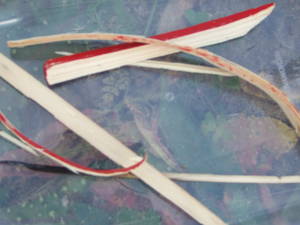Have you have ever spent ages carefully sawing out a complex shape in a piece of wood only to find it was slightly too big, or worse slightly too small? This happened to Alec Rivers an electronics PhD student at MIT when trying to make a picture frame using normal hand tools. Unlike the rest of us who would have started again, or possibly given up in disgust he has built a tool to solve the problem using modern computing.
modern computing.
There are already computer-controlled woodworking tools. Most of them work by building a rigid frame which can move the tool with great precision over a large distance. They work very well, but they are much larger than the material they can cut, so are expensive and wouldn't fit into a normal toolbox.
Rivers realised the human arm is very good at positioning a tool roughly over a large distance, and that you could then use the robotics to make fine adjustments. River used a router, essentially a drill which can cut sideways, and mounted it onto robotic actuators which can move it by about an inch. The process works by scannig the tool over the wood so it can build a map up of the material, and then it navigates using this map and a screen tells you roughly where to move the tool to, and the actuators do the rest
They managed to cut a detailed map of the United States from plywood bysimply moving the router.
The development could prove to be very useful for the slightly cack-handed, but it also means that jobs which would otherwise have needed large machine tools can be done with hand tools, and there are jobs you couldn't do any other way, like cutting an accurate hole in the side of a large water tank. The team are also looking to use the same technology for a plasma cutter on the end of a forklift for cutting precise holes in ships.










Comments
Add a comment